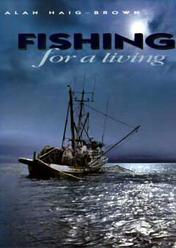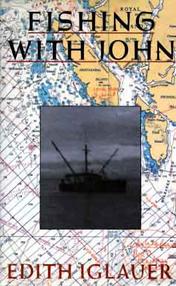Technology & Engineering

Correct identification of young salmonids will improve the accuracy of resource management information and lead to a fuller knowledge of the distribution and status of fish stocks. This guidebook will help you to identify young salmonids in the field. Fish identification requires practice, but learning to identify young salmonids can be an enjoyable and worthwhile endeavour.
Scope
Information is provided for 10 species of juvenile salmonids found in coastal BC watersheds. Regional differences occur in the appearance of fish, and their physical features may change as they grow. The range of characteristics is vast; this guide is limited to the freshwater rearing stages.
We have chosen to exclude brook trout (Salvelinus fontinalis) from this guide to avoid confusion with the widely distributed Dolly Varden (Salvelinus malma), and due to the fact that brook trout are known to be present in so few areas on the BC coast. Other field guides should be consulted when sampling in a location known to have brook trout.
Interior regions of BC have salmonid species or races that are not found in coastal waters. You should exercise caution when using this guide for interior waters or species.
Taxonomy of BC Salmonids
Salmon (Oncorhynchus), trout (Salmo) and char (Salvelinus) are the three genera of the family Salmonidae found in coastal BC fresh waters. The scientific and common names of BC coastal salmonids are:
Pink salmon (Oncorhynchus gorbuscha)
Chum salmon (O. keta)
Sockeye salmon (O. nerka)
Chinook salmon (O. tshawytscha)
Coho salmon (O. kisutch)
Cutthroat trout (O. darki)
Steelhead/rainbow trout (O. mykiss)
Brown trout (Salmo trutta)
Atlantic salmon (S. salary)
Dolly Varden (Salvelinus malma)
Bull trout (S. confluentus)
Brook trout (S. fontinalis)
Common names are often not consistent with the scientific names. The Atlantic salmon (Salmo salary is a trout. Cutthroat and rainbow trout (Oncorhynchus clarki and O. mykiss) have recently been placed in the salmon genus. Bull trout (Salvelinus confluentus) are char. We have adopted the common names used by McPhail and Carveth (1994).
Coastal BC fresh waters have relatively few native species and the fish most often encountered are salmonids. However, considerable biological diversity occurs within each species. These physical and behavioural differences in salmonids promote survival in the large variety of BC's coastal environments. For example, a resident rainbow trout in a small headwater reach of a stream may spend its entire life near where it emerged from the gravel and never grow larger than 15 cm. The anadromous form of rainbow trout (steelhead) will rear in fresh water for up to several years and then migrate up to several thousand kilometres at sea, where it can grow to more than 1 m and 10 kg before returning as an adult. Both forms are rainbow trout but their life histories are very different.
Identification Procedures
Users of this guide will find several pathways to identify juvenile salmonids. They include identification charts, colour and black and white illustrations, colour photos of live fish, and distribution information.
The Identification Charts can be used to determine whether fish are ,salmon, trout or char and the individual species. To confirm identification, the drawings and information in the Detailed Species Information pages provide summaries of physical features and distribution. The generalized distribution information is useful in determining when and where in watersheds the user can expect to find the various species. The photos show examples of how the features are expressed on live fish.
Pairs of species with similar physical characteristics (rainbow/ cutthroat, coho/ chinook, chum/ sockeye) are positioned next to each other to facilitate correct identification.
Few fish can survive being held out of water while the guidebook user goes through the identification steps. Please use the fish viewing bag provided with the guidebook to keep fish alive while identifying them. Do not overload the bag and change the water regularly to keep your specimens healthy. Careful handling will allow you to identify most fish without harming them. We recommend that you use a 10x magnifying glass to see some of the features on small fish.



Fixing Niagara Falls






